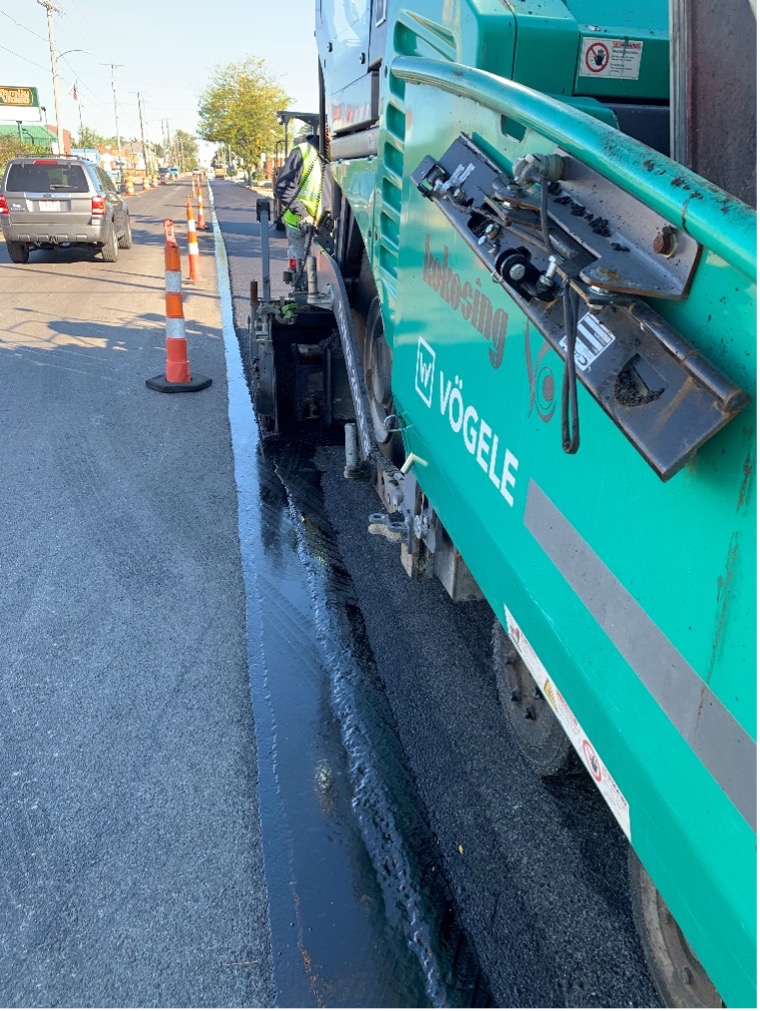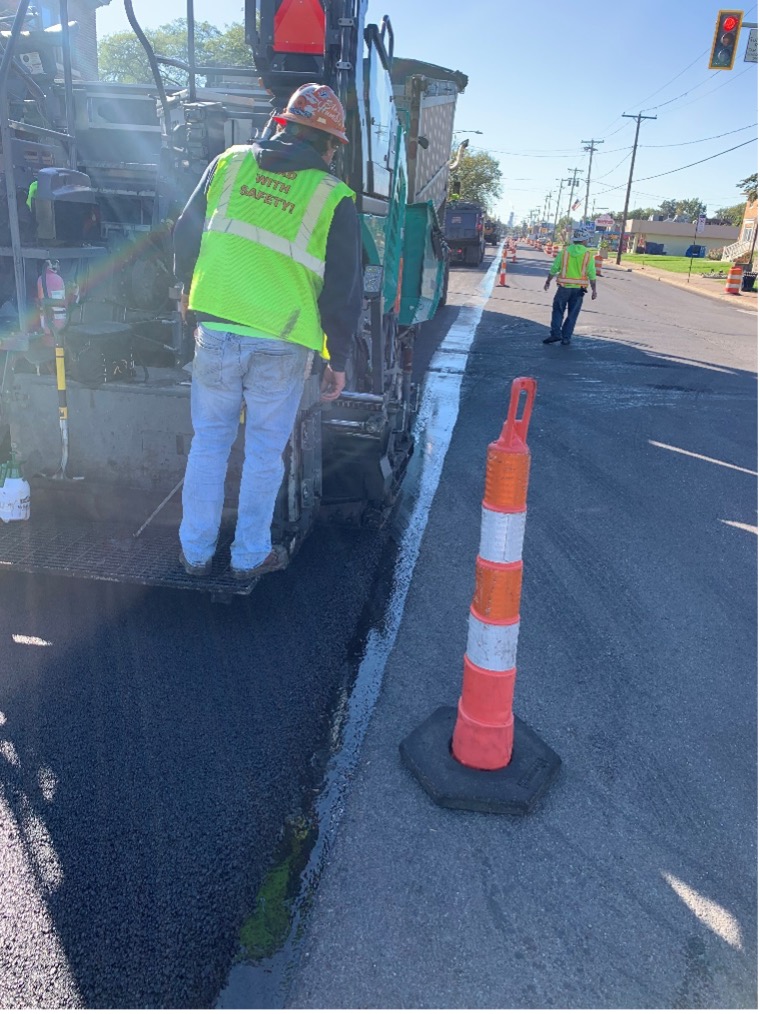On October 18, 2021, The City of Toledo, Ohio began a VRAM application with Road Fabrics on Summit Street and 101st Street. The HMA surface was applied at 1.5” thickness over HMA intermediate. The project ended at 130th Street with the two curb lanes, totaling 12,176 of footage.
Summit Street is a two-lane road with a middle turn lane throughout the project, paving started on the northbound curb lane this day.
Road managers know that the longitudinal joint is the first part of the pavement to fail. As a road’s most permeable part, this joint is susceptible to the elements. Air and water work down through this gap causing the joint to deteriorate, crack, and pothole. And when the longitudinal joint fails, the rest of the road soon follows—triggering the need for even more maintenance.
Cost-Benefit per Two-Lane Mile of VRAM with Different Overlay Service Lives (1)
The life extension of the joint area is approximately three to five years, and the benefit is calculated to be three to five times the initial cost.
Application began at 8:45 AM with Road Fabrics installing VRAM
Road Fabrics shot the northbound lane moving south against traffic. Ambient temperature at start time was 46°F. Surface consisted of intermediate HMA with a surface temperature of 45°F. VRAM temperature in distributor was 325°F.
The VRAM temperature at installation was 295°F with a cooling temperature of 90°F five minutes later. Target rate for the 15” application was 1.22 lb/ft.(2)
Project Details
Paving started at 9:30 AM just after the VRAM application on the northbound curb lane paving south. Northbound traffic was diverted to the middle turn lane. The paving train consisted of a Voegle Super 2003-3i paver, CAT CB13 steel drum roller, and a HAMM HD 120i steel drum roller. Both rollers worked from high to low in static mode with 6 passes each.
How VRAM Works?
Prior to paving, VRAM material is sprayed on an 18” wide location directly under the area where the longitudinal joint will be located. When the HMA is placed and compacted over VRAM, the material migrates upward into the fresh pavement. It fills voids to help ensure the joint is less permeable.(3)
Asphalt Materials, a midwestern-based company that has been involved in the asphalt business since 1956, supplies an industry-leading VRAM named J-Band®.
Notes:
(1) VRAM, Void Reducing Asphalt Membrane is referred to in Illinois as LJS, Longitudinal Joint Sealant. The typical VRAM application for centerline treatments is a width of 18”.
(2) Depending on the situation VRAM can be sprayed at different width’s. This article notes 15” . A typical application width for centerline applications is 18″.
(3) VRAM (Void Reducing Asphalt Membrane) is referred to in Illinois as LJS, Longitudinal Joint Sealant.
J-Band® is a product of Asphalt Materials, Inc. and was created in the labs of The Heritage Research Group.



